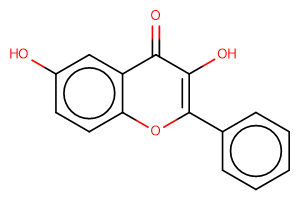
36-Dihydroxyflavone
CAS No. 108238-41-1
36-Dihydroxyflavone( —— )
Catalog No. M21213 CAS No. 108238-41-1
36-Dihydroxyflavone suppresses the epithelial-mesenchymal transition in breast cancer cells by inhibiting the Notch signaling pathway.
Purity : >98% (HPLC)
 COA
COA
 Datasheet
Datasheet
 HNMR
HNMR
 HPLC
HPLC
 MSDS
MSDS
 Handing Instructions
Handing Instructions
| Size | Price / USD | Stock | Quantity |
| 10MG | 59 | Get Quote |


|
| 100MG | 288 | Get Quote |


|
| 200MG | Get Quote | Get Quote |


|
| 500MG | Get Quote | Get Quote |


|
| 1G | Get Quote | Get Quote |


|
Biological Information
-
Product Name36-Dihydroxyflavone
-
NoteResearch use only, not for human use.
-
Brief Description36-Dihydroxyflavone suppresses the epithelial-mesenchymal transition in breast cancer cells by inhibiting the Notch signaling pathway.
-
Description36-Dihydroxyflavone suppresses the epithelial-mesenchymal transition in breast cancer cells by inhibiting the Notch signaling pathway.
-
In Vitro——
-
In Vivo——
-
Synonyms——
-
PathwayOthers
-
TargetOther Targets
-
RecptorOthers
-
Research Area——
-
Indication——
Chemical Information
-
CAS Number108238-41-1
-
Formula Weight254.24
-
Molecular FormulaC15H10O4
-
Purity>98% (HPLC)
-
SolubilityIn Vitro:?DMSO : 66.67 mg/mL (262.23 mM)
-
SMILESOc(cc1)cc(C2=O)c1OC(c1ccccc1)=C2O
-
Chemical Name——
Shipping & Storage Information
-
Storage(-20℃)
-
ShippingWith Ice Pack
-
Stability≥ 2 years
Reference
1.Chen J Chang H Peng X et al. 36-dihydroxyflavone suppresses the epithelial-mesenchymal transition in breast cancer cells by inhibiting the Notch signaling pathway[J]. Scientific Reports 2016 6:28858.
molnova catalog



related products
-
Virstatin
Virstatin is a compound used as a molecular building block.
-
PK150
PK150 shows oral bioavailability and antibacterial activity against several pathogenic strains at submicromolar concentrations.
-
(S)-VU0637120
(S)-VU0637120 is a selective neuropeptide Y(4)R-mutant antagonist used in the study of metabolic disorders.



 Cart
Cart
 sales@molnova.com
sales@molnova.com


